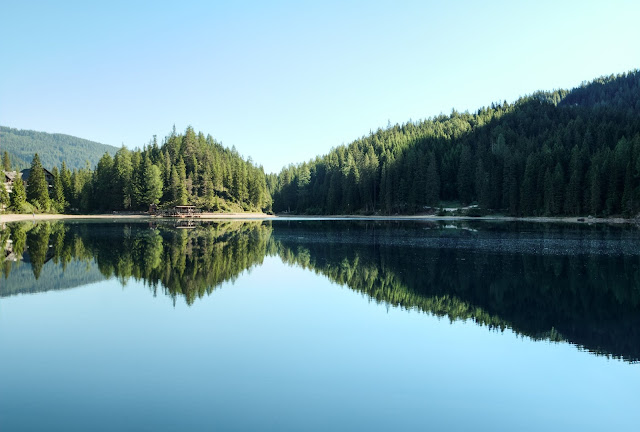If not managed, weeds can quickly take over a pond or lake, reducing the water quality, while killing off desirable aquatic plants and wildlife. There are four methods of weed control for lakes: Mechanical, chemical, cultural, and biological.
Methods of Weed Control
Mechanical control uses large aquatic rakes much like the leaf rake you use in your garden. This method uses no chemicals, but the equipment is large and expensive and the process is time consuming.
Chemical control uses aquatic herbicides to kill off and control weeds. Glyphosate, copper sulfate, and algaecides are three common herbicides that are used. Herbicides can be toxic to fish and other lake habitat.
Cultural control uses pond dye that darkens the water and prevents sunlight from penetrating. If weeds are dense, then chemical or mechanical controls might be needed before applying dyes.
Biological control uses grass carp to control aquatic weeds. Grass carp is used to control weeds in lakes much like sheep and goats control the weeds in your garden. Using grass carp is a natural method of control for weeds in lakes and ponds and should be considered when possible over other methods of weed control.
What Is Grass Carp
The grass carp is a large freshwater fish that can live for 20 years or longer. It has selective eating habits and is used to control weeds and other aquatic vegetation. There are different species of grass carp and some can be invasive. For example, the Chinese grass carp is listed as invasive and cannot be used in California. Since it’s sterile and cannot reproduce in the wild, the triploid grass carp in noninvasive, making it a good alternative for controlling aquatic vegetation and macro-algae in most areas.
Before deciding on any method of aquatic weed control, you should contact your local Department of Fish and Game for guidance.
 |
| Photo by eberhard grossgasteiger from Pexels |
Methods of Weed Control
Mechanical control uses large aquatic rakes much like the leaf rake you use in your garden. This method uses no chemicals, but the equipment is large and expensive and the process is time consuming.
Chemical control uses aquatic herbicides to kill off and control weeds. Glyphosate, copper sulfate, and algaecides are three common herbicides that are used. Herbicides can be toxic to fish and other lake habitat.
Cultural control uses pond dye that darkens the water and prevents sunlight from penetrating. If weeds are dense, then chemical or mechanical controls might be needed before applying dyes.
Biological control uses grass carp to control aquatic weeds. Grass carp is used to control weeds in lakes much like sheep and goats control the weeds in your garden. Using grass carp is a natural method of control for weeds in lakes and ponds and should be considered when possible over other methods of weed control.
 |
| Photo by eberhard grossgasteiger from Pexels |
The grass carp is a large freshwater fish that can live for 20 years or longer. It has selective eating habits and is used to control weeds and other aquatic vegetation. There are different species of grass carp and some can be invasive. For example, the Chinese grass carp is listed as invasive and cannot be used in California. Since it’s sterile and cannot reproduce in the wild, the triploid grass carp in noninvasive, making it a good alternative for controlling aquatic vegetation and macro-algae in most areas.
Before deciding on any method of aquatic weed control, you should contact your local Department of Fish and Game for guidance.






.png)










No comments
Thanks for dropping by my Wonderland! Please share your thoughts below.